10 brilliant bluebell walks
Perfect wildflower walks for Spring
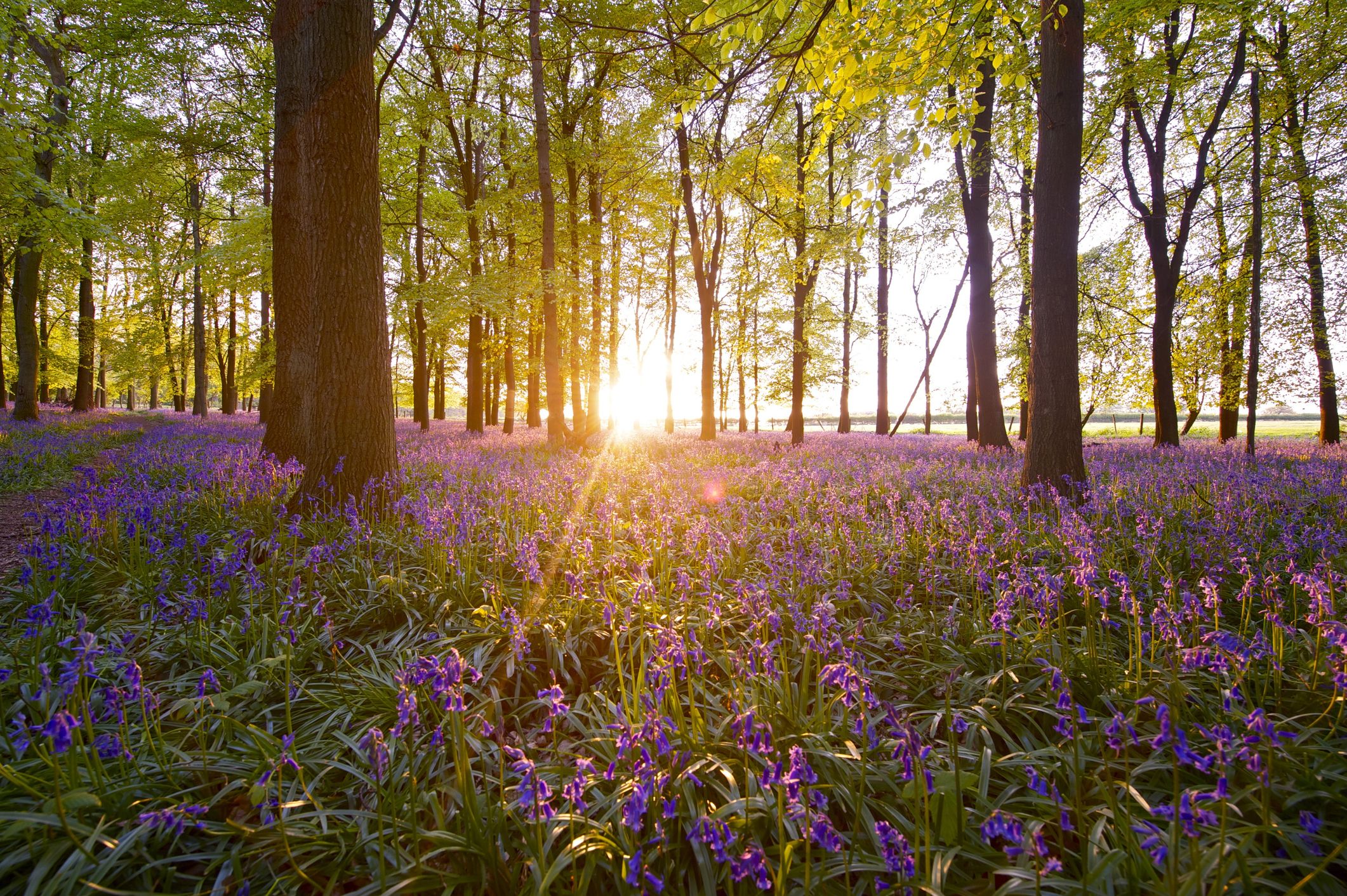
1. Blackbury Camp, Devon - Ancient camp to coast
Combine a little bit of beach with wonderful woodland on this south Devon loop. Begin at Blackbury Camp, an Iron Age hill fort, built in the fourth century BC atop a narrow ridge. Impressive ramparts and earthworks remain, now cloaked in a copse where bluebells bloom in abundance. For a lovely 8-mile walk, head south from here to the thatched cottages, Old Bakery and working forge in seaside Branscombe. Pop into the cafe by the beach and breathe in the salty air. Then return north via Bovey Down, home to another lovely tract of trees.
Blackbury Camp & Branscombe route
2. Prior’s Wood, near Bristol - Bus to the blooms
Prior’s Wood Nature Reserve is easily reached from Bristol by bus, a super choice for a car-free spring stroll. Parts of this woodland date back to the 17th century, with a mix of lime, oak, hazel and sweet chestnut. It provides a perfect stage-set for bluebell displays. From the bus stop, make a moderate 3-mile loop. First, carefully cross the roads to access the reserve, where various trails lead up into the woods. Climb via right-hand paths until you reach a stream. Turn left to return a different way, looking out for chiffchaffs, warblers and pungent wild garlic too.
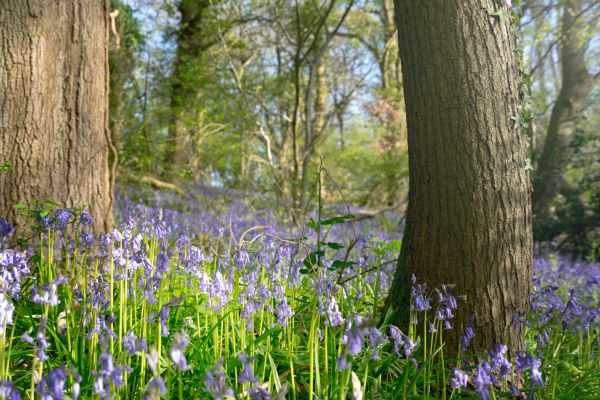
3. Quendon Wood, Essex - Rural village rambling
Though the M11 motorway rumbles nearby, the villages of Rickling, Ugley and Quendon are perfectly peaceful. And they make a good focus for a charming 6.5-mile stroll. There are three fascinating churches to visit: one Grade I-listed flint, one with a striking-white cupola, one with a Tudor tower. Also you’ll find ancient Quendon Wood, a Site of Special Scientific Interest and, in April/May, a blaze of bluebells. Aim to finish in Rickling Green, so you can have a slap-up lunch at the 18th-century Cricketers Arms pub.
4. Combe Hill, Buckinghamshire - Train to the trees
The chalk downs and beech woods of the Chilterns are prime bluebell territory. Even better, this Area of Outstanding Natural Beauty is well-served by public transport, opening up car-free walking possibilities. For instance, try the linear, 6.5-mile route between the train stations of Wendover and Great Missenden. From Wendover, head up Coombe Hill, one of the Chilterns’ highest points, topped by a monument to the Boer War. Follow the South Bucks Way south, through numerous patches of bluebell-dappled woodland and back down the valley. Just before the finish, look out for another crop of wildflowers in Coneybank Wood.
5. Ebernoe Common, West Sussex - Uncommonly good
This tract of Low Weald woodland near Petworth was historically common grazing land. These days it’s cared for by the Sussex Wildlife Trust and is a floral delight. Bluebells burst out here in spring, but you might also see purple orchids, wild daffodils, cowslips and primroses. Start from Ebernoe’s Victorian Holy Trinity Church and make an easy 5-mile figure-of-eight. Walk via the common’s woodland, glades, meadows and streams. And loop out to Langhurst Common and Ball’s Cross, home to the fine old Stag Inn.
6. Clumber Park, Nottinghamshire - Stately strolling
There’s no manor house at Clumber these days. That was demolished in 1938. But the surviving parkland, gardens and lake, now owned by the National Trust, are still grand to explore. Spring is especially striking when thousands of bluebells carpet the ground. Start from Hardwick village to make a simple 3-mile loop. First enter a pocket of ancient woodland, home to 500-year-old oaks and bluebells aplenty. Walk through new native plantings and towering Scots Pine. Trace the long Lime Tree Avenue. And walk with another bevy of bluebells in White Pheasant Wood. There are lovely views of the lake too.
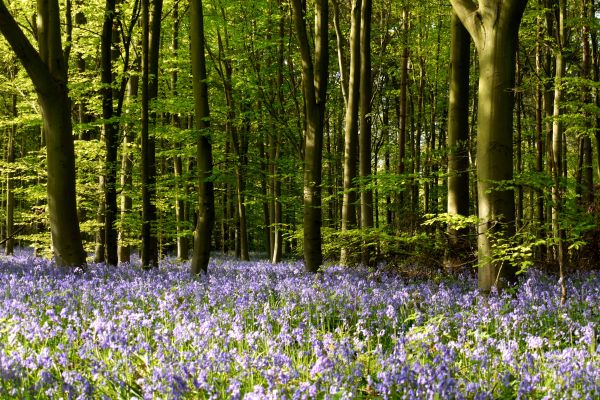
7. Urquhart Bay Wood, Highlands - Loch-side blooms
On the northern shores of Loch Ness, in the shadow of ruined Urquhart Castle, lies a small but special crop of trees. Urquhart Bay Wood sits between the Enrick and Coiltie rivers and is one of the finest patches of ancient wet woodland left in Europe. It floods completely after heavy rain. But in spring it’s also known for bluebells, which thrive beneath the alder, ash, white willow and bird cherry trees. From the busy hub of Drumnadrochit, home to the Loch Ness Centre, you can make a peaceful 1.25-mile loop.
8. Llandeilo, Carmarthenshire - Two-for-one wildflowers
The medieval market town of Llandeilo has multiple bluebell-spotting spots on its doorstep. A mile east is Coed Tregib, a segment of ancient woodland brimming with biodiversity that becomes blanketed in bluebells. There’s a network of trails here, including an all-ability path. West of Llandeilo is Dinefwr Park. The site and castle ruins have a tumultuous history, spanning Romans, Welsh princes and Tudor kings. But a big draw in spring is the explosion of bluebells in Dinefwr’s Castle Woods. Make a 4-mile amble around the estate, looking out for deer too.
9. Castle Eden Dene, County Durham - More purple plants
Castle Eden Dene is a remnant of another world. This deep, narrow gorge burrowing inland from the North Sea was formed in the last Ice Age. Largely untouched since, it’s a chance to step into the sort of wilds that once cloaked much of the country. Combining the dene’s two waymarked trails creates a 3.5-mile adventure. You’ll see limestone cliffs, ancient yews, a wide variety of birds and woods fragrant with wild garlic and bluebells. Also, walk beyond Gunners Pool Bridge to search for rare herb-paris. It flowers in May-June, when thin yellow-green petals splay from its purple heart.
10. Glen Finglas, Stirlingshire - Big woods
This is a big walk, for a big space, with big rewards. Glen Finglas, near Brig o’Turk, is the Woodland Trust’s largest woods. It’s also home to Scotland’s most extensive collection of ancient trees. The 16.6-mile waymarked Meall Trail runs around the estate, which was once a royal hunting ground. Now it’s a great place to spot red deer and golden eagles, and bluebells in spring. There are impressive views across the surrounding lochs and glens too. Start at the Visitor Gateway centre at Lendrick Hill (open daily April-October) for more info.

Explore more
We’ve got ideas for hundreds more wonderful walking routes across England, Scotland and Wales, long and short, easy and challenging. Search for routes on our website. Or join a guided walk with a local Ramblers group. Find your nearest Ramblers group and choose a walk that suits your pace, fitness and interests.
All images © Getty
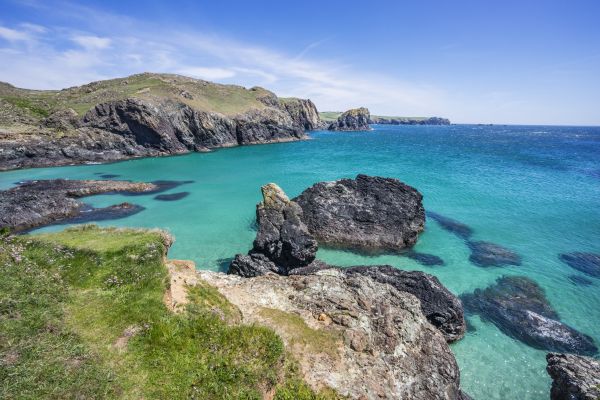
10 top walks for summer
The sun is shining, the flowers are out, the countryside looks glorious. Make the most of the season on these splendid strolls.

10 walks with amazing views
Stride out on one of these incredible hikes to enjoy some of England, Wales and Scotland’s most awesome vistas.

10 best dog walks
Great places to explore with your four-legged friend, from thrilling heights and fantastic forests to sweeping beaches.
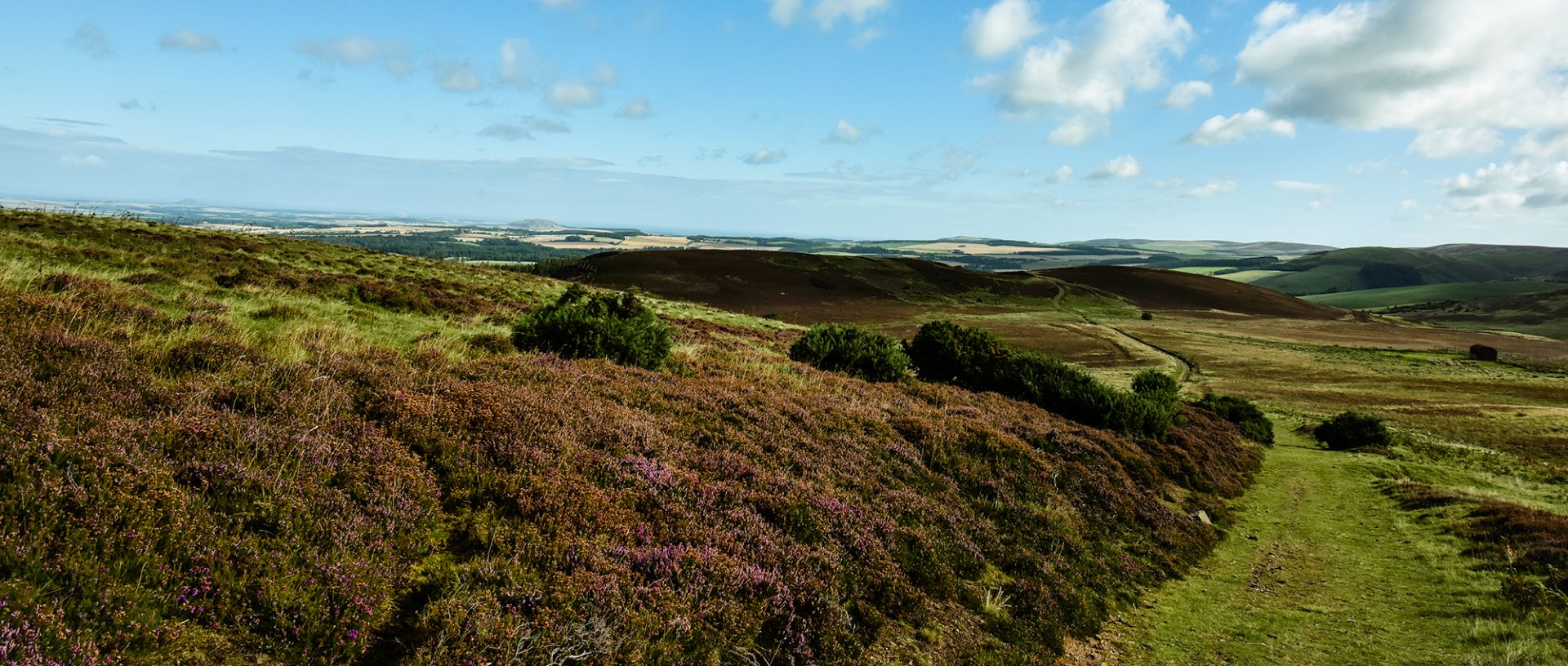
Campaign With Us
We campaign to remove barriers to walking and we step up to protect the places we love to wander.